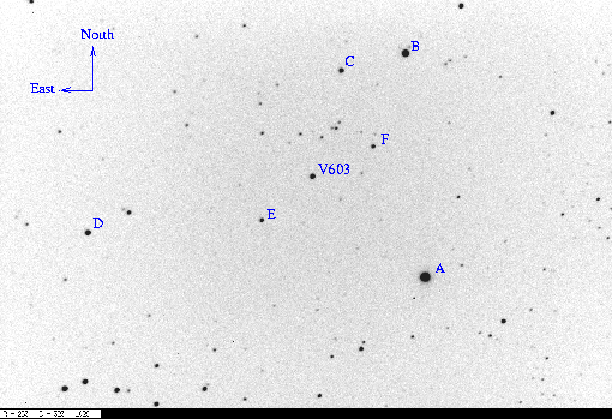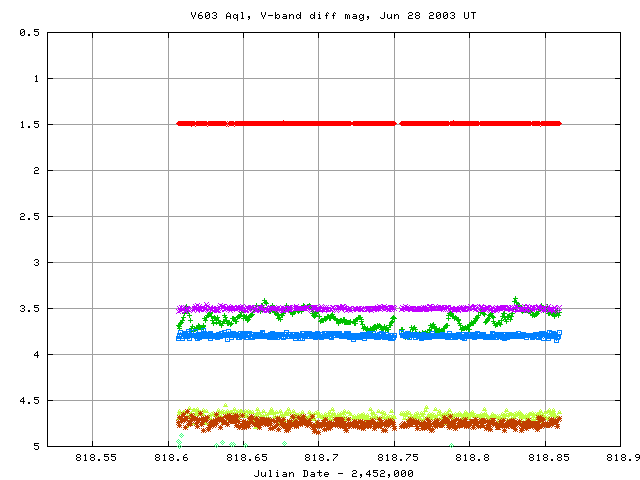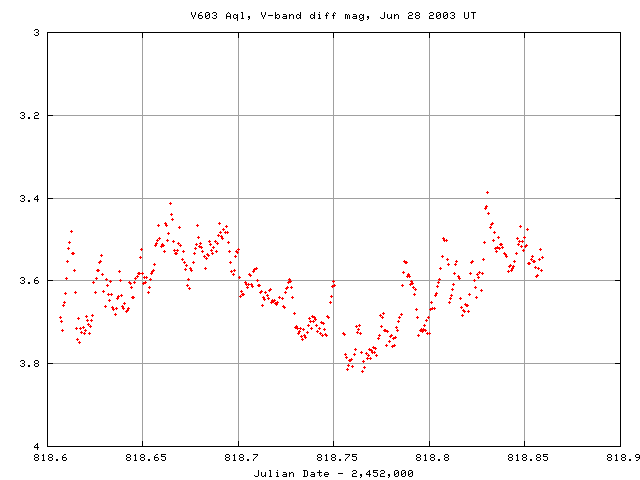
On Jun 27, 2003, EST, I decided to put the 12-inch Meade LX-200 into some serious use: photometry of the variable star V603 Aql.
The plan:
I got a bit of a late start (opening up after 10:00 PM), but it didn't matter much because I didn't need flats, and because the star needs a bit of time to rise up to a decently small airmass.
Here's a chart of the field of V603 Aql, taken with our equipment: the field is about 20 arcminutes wide.
Note that
I measured the instrumental magnitude of each star with aperture photometry, using a radius of 6 pixels = 13.8 arcseconds, and sky defined by an annulus around each star. Following the procedures outlined by Kent Honeycutt's article on inhomogeneous ensemble photometry, I used all stars available in each image to define a reference frame, and measured each star against this frame.
Below is a graph of the scatter in differential magnitude versus magnitude. Note that star "A" is saturated. I did not include it in the solution as a reference.

The outlier at differential mag = 3.3 is V603 Aql.
It is clear that most of the stars in the field are not varying appreciably, but V603 Aql is, as the green light curve shows. The other data belong to stars B, C, D, E and F.

Here's a closeup of the variation in V603 Aql itself:

I've made a table of the measurements themselves, with three different flavors of time. Here's the start of the table:
# Measurements of V603 Aql made at RIT Observatory, Jun_ 28, 2003 UT, # taken by Michael Richmond. # All data taken with 12-inch Meade LX-200 + V filter + SBIG ST-8 CCD # Each exposure 30 seconds long; the tabulated times are midexposure # and accurate only to +/- 1 second. # 'mag' is the difference between V603 Aql and BD+00 4022 = GSC 00448.00731 # # UT day JD-2,450,000 HJD-2,450,000 mag Jun_28.10664 2818.60664 2818.61198 3.689 Jun_28.10722 2818.60722 2818.61256 3.697 Jun_28.10779 2818.60779 2818.61313 3.721
Last modified 6/28/2003 by MWR.